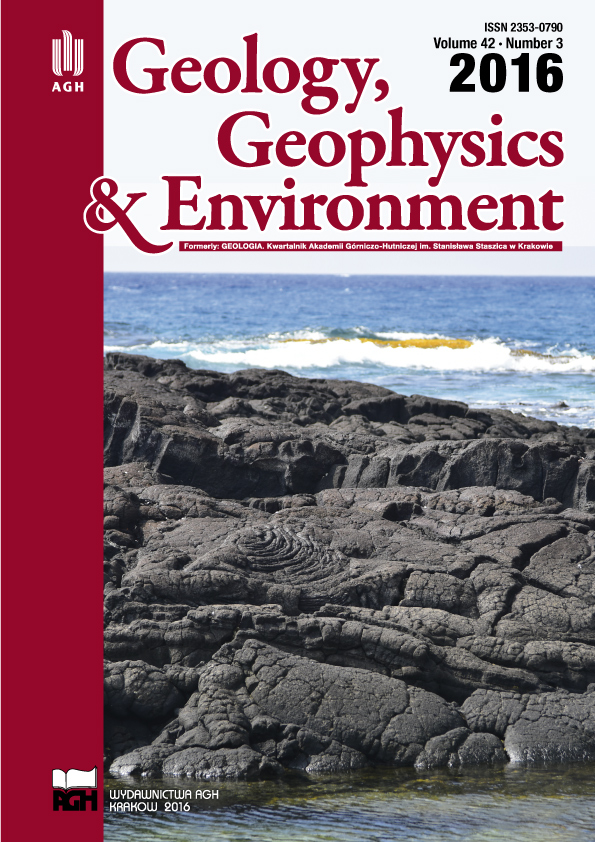Economic modelling of the management of dredged marine sediments
Main Article Content
Keywords
dredging, sediments, sediment management, economic modelling, economic impacts, economic analysis, beneficial use
Abstract
This paper presents and applies an economic model developed for the management of dredged marine sediments. The model predicts direct project costs and direct, indirect and induced economic impacts. The model is applied to analyse the economic aspect of the specific potential beneficial use of dredged sediment for land reclamation in an Irish context. The model results show the potential economic benefits to land reclamation of using dredged sediment including its value as a potential substitute for quarry based material and as an alternative to traditional offshore dredged sediment disposal, where appropriate. Analysis of other sediment management approaches including wetland creation, is also presented with the results for wetland creation indicating its potential, where appropriate, as a valuable alternative to offshore disposal. Indicative economic benefits are predicted by the model for the different dredge sediment management approaches analysed.
Downloads
References
Bortone G. & Palumbo L., 2007. Sustainable management of sediment resources. Volume 2: Sediment and Dredged Material Management. Elsevier, The Netherlands.
Brander L., Florax R. & Vermaat J., 2006. The empirics of wetland valuation: a comprehensive summary and a meta-analysis of the literature. Environmental & Resources Economics, 33, 223–250.
CEAMaS, 2015. Civil engineering applications for marine sediments. [on-line:] http://www.ceamas.eu [access: 21.10.2015].
Central Dredging Association, 2015. Integrating adaptive environmental management into dredging projects. Radex Innovation Centre, Rotterdamseweg HD Delft, The Netherlands.
Central Statistics Office, 2014, Irish wage data. Dublin, Ireland.
D’Alisa G., Demaria F. & Kallis G. (eds.), 2015. Degrowth: A vocabulary for a new era. Routeledge, New York.
DredgDikes Project, 2013. Dredge material in dike construction. [on-line:] http://www.dredgdikes.eu/ [access: 21.10.2015].
DTZ Sherry Fitzgerald, 2014. Irish land market-summer review 2014. Dublin, Ireland.
Eisma D., 2006. Dredging in Coastal Waters. Taylor & Francis, United Kingdom.
Environment Agency, WRAP, 2010. Technical report on the beneficial use of marine sediment from capital and maintenance dredging in land based projects. Oxfordshire, UK.
Gomez-Baggethun E., de Groot R., Lomas P. & Montes C., 2010. The history of ecosystem services in economic theory and practice: from early notions to markets and payment schemes. Ecological Economics, 69, 1209–1218.
Harrington J. & Smith G., 2013. Guidance on the beneficial use of dredge material in Ireland. Irish Environmental Protection Agency.
Harrington J., Sutton S. & Lewis A., 2004. Dredging and dredge disposal and reuse in Ireland – a small island perspective. [in:] Dredging in a Sensitive Environment. Proceedings of the World Dredging Congress XVII, Hamburg, Germany, 27 September –1 October 2004, B4-5, World Organization of Dredging Associations (WODA), 1–14.
Hawdon D. & Pearson P., 1995. Input-output simulations of energy, environment, economy interactions in the UK. Energy Economics, 17, 1, 73–86.
Herman S., Pieters A., Glaser D., Gregoire P., Priez C., Desmoulin D. & Guglielmetti D., 2014. A lustrum of valorisation of contaminated sediments from the Port of Dunkirk (France). [in:] Proceedings of the South Baltic Conference on Dredged Materials in Dike Construction Rostock, 10–12 April 2014 , 137–144.
Irish Dumping At Sea (Fees) Regulations, 2012. S.I. No. 270 of 2012.
Irish Waste Management (Landfill Levy) (Amendment) Regulations, 2013. S.I. No. 194 of 2013.
Ivanova G. & Rolfe J., 2011. Using input-output analysis to estimate the impact of a coal industry expansion on regional and local economies, impact assessment and project appraisal, 2011. Beech Tree Publishing, 29, 4, 277–288.
Kammen D.M., Wei M. & Patadia S., 2010. Putting renewables and energy efficiency to work: how many jobs can the clean energy industry generate in the US? Energy Policy, 38, 2, 919–931.
Leontief W., 1951. Input output economics. Scientific American, 185, 15–21 Norton D., Hynes S. & Boyd J., 2016. Valuing Ireland’s ecosystem services (VIBES). Irish Environmental Researchers’ Colloquium, University of Limerick, Ireland.
OSPAR Commission, 2009. Assessment of the environmental impact of dredging for navigational purposes . United Kingdom.
PIANC, 1992. Beneficial use of dredged material. EnviCom Working Group 19, Brussels, Belgium.
PIANC, 2009a. Long term management of confined disposal facilities for dredged material. EnviCom Working Group 11, Brussels, Belgium.
PIANC, 2009b. Best management practices applied to dredging and dredged material disposal projects for protection of the environment. EnviCom Working Group 13, Brussels, Belgium.
PIANC, 2009c. Dredged material as a resource – options and constraints. EnviCom Working Group 14, Brussels, Belgium.
PIANC, 2013. Water injection dredging. MarCom Working Group 51, Brussels, Belgium.
PRISMA, 2014. Promoting integrated sediment management – Final Report. [on-line:] http://www.prisma-projects. eu/images/Final%20report%20PRISMA.pdf [access: 22 .10.2015].
Sheehan C., 2012. An analysis of dredge material reuse techniques for Ireland. Cork Institute of Technology, Ireland [Ph.D. thesis].
Sheehan C. & Harrington J., 2012. Management of dredge material in Ireland – a review. Waste Management, 32, 1031–1044.
SMOCS, 2012. Sustainable management of contaminated sediment. Baltic Sea Region Programme Project, [on-line:] http://smocs.eu/ [access: 22.10.2015].
TIDE, 2013. Tidal river development project 2013. [on-line:] http://http://www.tide-project.eu/ [access: 22.10.2015].
United States Army Corps Engineers, 1987. Beneficial uses of dredged material. EM 1110-2-5026, US Army Corps of Engineers, Washington, DC.
United States Army Corps Engineers & United States Environmental Protection Agency, 2007. Identifying, planning, and financing beneficial use projects using dredged material: Beneficial Use Planning Manual. EPA842-B-07-001. U.S. Environmental Protection Agency & U.S. Army Corps of Engineers, Washington, DC.
United States Army Corps Engineers, 2012. Dredging operations and environmental research. [on-line:] http://el. erdc.usace.army.mil/dots/doer/doer.html [access: 22.10. 2015].
United States Army Corps Engineers, 2014. Economical treatment of dredged material to facilitate beneficial use. ERDC/ EL TR-14-11. Environmental Laboratory, U.S. Army Engineer Research and Development Center, Vicks burg, USA.
USAR, 2016. Using sediments as a resource. [on-line:] http:// wrt.org.uk/project/usar/ [access: 22.10.2015].
Wiedmann T., 2009. A review of recent multi-region input–output models used for consumption-based emission and resource accounting. Ecological Economics, 69, 2, 211–222.


